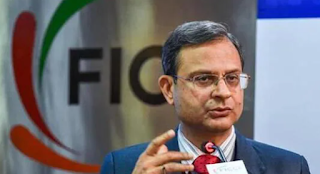In a pivotal leadership transition, Sanjay Malhotra, a seasoned bureaucrat and top revenue officer, has been appointed as the new Governor of the Reserve Bank of India (RBI). Malhotra, a 1990 batch IAS officer of the Rajasthan cadre, will take charge as Shaktikanta Das completes his six-year tenure. The announcement, made by the Union Cabinet's Appointments Committee, marks a critical moment in India's ongoing fight against inflation.
 |
| Sanjay Malhotra Takes Charge as RBI Governor to Steer India Through Inflation Challenges |
From North Block to Mint Road
Having previously overseen India’s direct and indirect tax administration, Malhotra brings a wealth of experience in fiscal management. His extensive background includes leadership roles in financial services, power, mining, and IT. Like his predecessors Shaktikanta Das, D. Subbarao, Y.V. Reddy, and Bimal Jalan, Malhotra transitions from the finance ministry to helm India’s central bank, showcasing a tradition of blending fiscal expertise with monetary governance.
Inflation: A Persistent Challenge
Malhotra assumes office at a time when India is grappling with inflationary pressures. October's Consumer Price Index (CPI) inflation rate of 6.21% exceeded the RBI’s upper tolerance limit of 6%, driven by stubbornly high food prices. Tackling inflation within the RBI’s flexible 2-6% target range remains a priority for the Monetary Policy Committee (MPC).
In his final address, outgoing governor Das highlighted the importance of maintaining a vigilant anti-inflationary stance, expressing optimism that easing food price shocks would help align headline inflation with the target. However, experts predict a challenging road ahead for Malhotra, with projections of inflation normalization only by the September quarter of FY26.
New Leadership Dynamics
Malhotra’s appointment coincides with significant changes in the MPC. Recently, three new external members joined the six-member committee: Ram Singh from the Delhi School of Economics, Saugata Bhattacharya, a former Axis Bank economist, and Nagesh Kumar, head of the Institute for Studies in Industrial Development. They join internal members Rajiv Ranjan, Michael Debabrata Patra (Deputy Governor), and Malhotra himself. This reshuffle sets the stage for fresh perspectives in monetary policymaking.
The February 2025 MPC meeting, Malhotra’s first as governor, is expected to be closely watched. Economists from Capital Economics anticipate a potential 25-basis-point repo rate cut, signaling a possible shift in monetary policy under the new leadership.
External Pressures and Global Challenges
The global economic environment presents additional hurdles. Geopolitical tensions, supply chain disruptions, and surging commodity prices continue to exert inflationary pressure. Protectionist policies and trade tariffs, particularly from major economies, further complicate the outlook. As governor, Malhotra must navigate these external challenges while maintaining domestic economic stability.
A Strategic AppointmentMalhotra’s tenure is set to be pivotal, with his experience in fiscal policy and governance expected to influence his approach to monetary challenges. The blend of a new governor and recently appointed MPC members is anticipated to bring a fresh outlook to the RBI’s inflation-targeting strategy.
Economists like Madhavi Arora from Emkay Global Financial Services have noted that the macroeconomic landscape in 2025 presents distinct challenges compared to earlier years. Malhotra’s leadership will be crucial in steering India’s central bank through this complex economic terrain.
Conclusion
Sanjay Malhotra’s appointment as the RBI governor marks a new chapter in India’s fight against inflation. With his fiscal expertise and a revamped MPC, Malhotra is poised to lead the RBI through economic challenges, balancing growth, stability, and inflation control in an evolving global landscape. As India watches this transition, all eyes will be on the central bank’s policy trajectory in the coming months.
Comments
Post a Comment